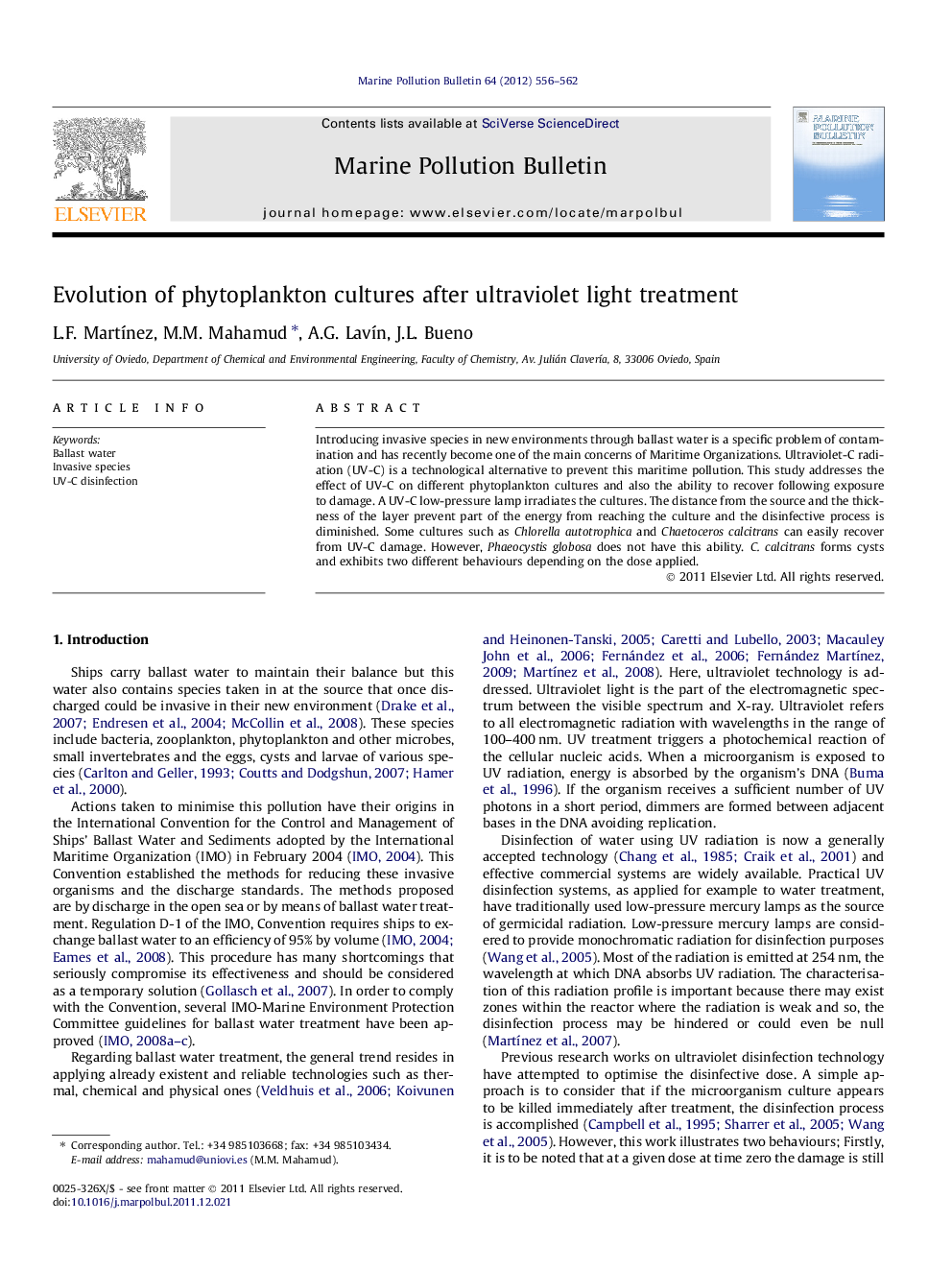| Article ID | Journal | Published Year | Pages | File Type |
|---|---|---|---|---|
| 6360487 | Marine Pollution Bulletin | 2012 | 7 Pages |
Introducing invasive species in new environments through ballast water is a specific problem of contamination and has recently become one of the main concerns of Maritime Organizations. Ultraviolet-C radiation (UV-C) is a technological alternative to prevent this maritime pollution. This study addresses the effect of UV-C on different phytoplankton cultures and also the ability to recover following exposure to damage. A UV-C low-pressure lamp irradiates the cultures. The distance from the source and the thickness of the layer prevent part of the energy from reaching the culture and the disinfective process is diminished. Some cultures such as Chlorella autotrophica and Chaetoceros calcitrans can easily recover from UV-C damage. However, Phaeocystis globosa does not have this ability. C. calcitrans forms cysts and exhibits two different behaviours depending on the dose applied.
⺠Response of Clorella spp., Chaetoceros calcitrans and Phaeocystis globosa cultures to different doses of UV-C radiation was determined. ⺠Flow cytometry and pulse amplitude modulated (PAM) techniques were used for determining cell viability. ⺠P. globosa is the most affected by the UV-radiation. ⺠C. calcitrans forms cysts when irradiated at low doses. ⺠For high UV doses C. Calcitrans shows a complete recovery 96 h after UV exposition.
